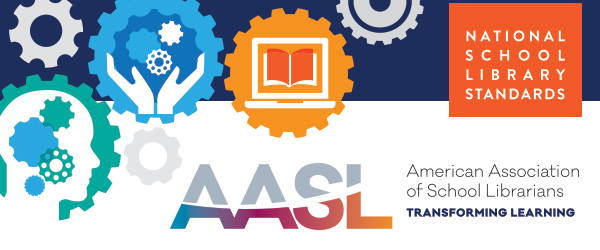
Standard 1: The Learner and Learning
As a former middle school English teacher, I have experience with students from a diverse range of cultures and socio-economic statuses. I have seen the struggle that English Language Learners and economically disadvantaged students face on a daily basis. The educational gap that separates them from their peers gets wider each year, unless there is an intervention. I am passionate about helping disadvantaged students, and this was the inspiration for my grant proposal. Purposeful targeting of reading skill achievement at the third grade level can help students for the rest of their lives. When I am a school librarian, I plan on submitting my proposal to AASL’s “Innovative Reading Grant,” among others, to provide my students with the resources they need to be successful in both school and life.
Standard 2: Planning for Instruction
I was very fortunate to be paired with a wonderful school librarian and fantastic fourth grade teacher for my collaborative internship. I got to have valuable experience with upper elementary students and understand what their experiences and misconceptions are regarding trustworthy online resources. I learned a lot from them, and I’m incredibly pleased with the gains that were made from their pre-assessment to their post-assessment. Daily assessments were crucial to determining their understanding, and were a large factor in the ultimate success of the teaching unit.
Standard 3: Knowledge and Application of Content
Thanks to years as a teacher, and my experience in this program, I have many resources to locate quality diverse book titles. I’m excited to curate a collection of books and resources that will both educate students and enrich their lives. The Production of Instructional Materials course (LIBS 602) has provided me with many instructional technologies that I will use in my library, such as Voki, QR codes, virtual field trips, Kapwing, Loom, Big Huge Labs, and FoldPlay. My goal is to use instructional technology to make library lessons engaging, relevant, and educational, and I believe that my solar system Pathfinder is a great example of this objective. By blending what students need to know with how they want to learn, they’re more likely to want to engage with the content and they will be subsequently more likely to retain it.
Standard 4: Organization and Access
My Collection Development Plan is a prime example of my ability to identify a problem, discover a root cause, and implement a solution that is supported by data and grounded in research. I am a natural problem-solver, and I’m driven by my passion to help my students. If they have a problem that I am able to help by using my experience and position, then I will do everything within my power to help them. This includes defending students’ rights to read what they want to read, and to have access to what they want to read.
Standard 5: Leadership, Advocacy, and Professional Responsibility
I think of myself as a lifelong learner. I love being a student, both enrolled and of life. That’s a big part of the draw of being a teacher and becoming a school librarian. A day isn’t complete without learning a new fact or being exposed to a new viewpoint. I will continue to pursue professional development so that I can grow as a person and help my students grow as well. As a librarian, I will always use my position of power responsibly and for the greater good. Those without a voice are the ones who most need one, and I will be the voice for my students when they feel they are unable to speak for themselves. In my Speaking Notes, I advocate on my students’ behalf when their rights as both students and humans are under attack. Though the scenario is purely theoretical, I wouldn’t hesitate to step up and speak for my future students.